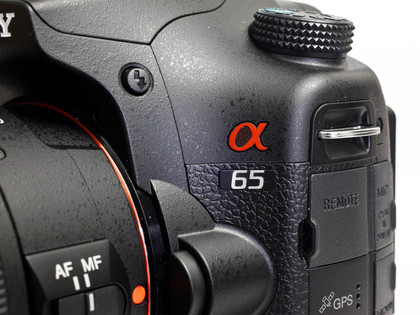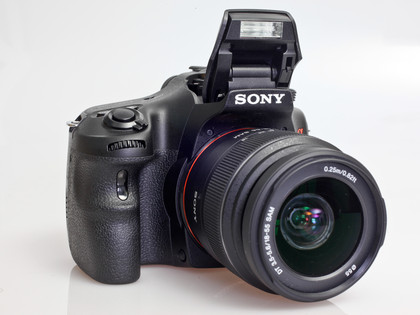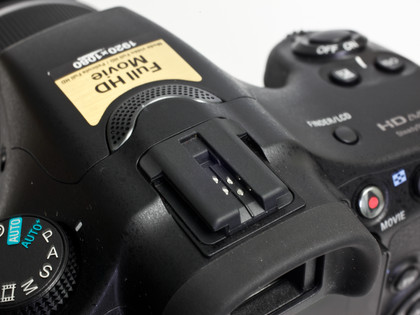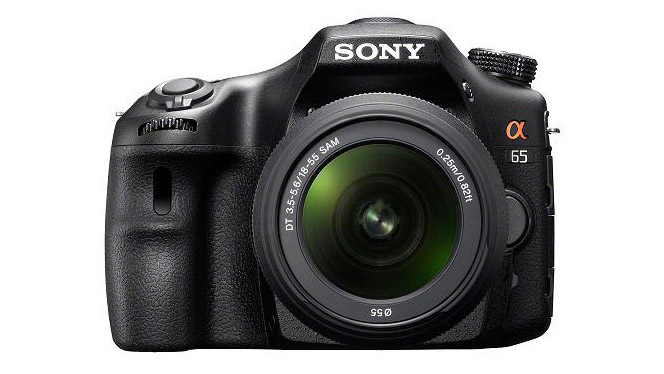Why you can trust TechRadar

As the A65 shares the same 24.3mp sensor as the flagship A77, we were expecting the same sort of high-quality images that we marveled at when reviewing the more expensive model recently: we weren't disappointed.
Images are packed with lots of fine detail, with a decent level of edge-to-edge sharpness (thanks to the kit lens) and display well-controlled noise throughout much of the A65's ISO sensitivity range.
The A65's Auto White Balance performs well for the most part, although it is a little off the mark under artificial lighting, generating overly warm results in general. Thankfully the camera provides a decent range of options for tweaking the WB and/or setting it manually.
Raw files also offer the capacity to fine-tune the colours post-shoot, as well as providing the opportunity to pull extra detail out of under and slightly over-exposed areas in high contrast images, allowing you to get the very best from the A65's superb sensor.
By default, colours are natural-looking, with a pleasing level of saturation, while the metering system performs well, producing accurate exposures across an array of different subjects and lighting conditions.
The camera's DRO (Dynamic Range Optimizer) and HDR (High Dynamic Range) features also proved to be very effective: handy options which will help avid Auto-mode shooters to expand the dynamic range in JPEGs.

For more creative photographers who don't want the hassle of processing raw files post-shoot, the A65's impressive range of Picture Effects (some of which are customisable) all produce distinctive results and are very enjoyable to explore.
The A65's phase detection AF system performs admirably. Despite its scaled-back design in comparison to its big brother's, the A65's 15-point system is still incredibly responsive, finding a near-instant lock under most circumstances. In low light, the AF remains pretty reliable; thanks to the helping hand it gets from the camera's built-in pop-up flash, which fulfils the function of the dedicated AF-assist lamp that Sony chose to reserve for the A77 alone.
The full-time AF – whether you're shooting stills using the Live View system or recording HD movies – is a real gem of a feature that leaves a favourable impression of the level of responsiveness you can squeeze out of a camera built around SLT technology. It's fast, reliable and there's a decent range of options on hand to tweak exactly how you want the system to behave, with the option of choosing the number and spread of AF points used for instance.
We're also impressed by the A65's Subject Tracking mode, which does an admirable job of keeping up with moderately-paced moving subjects. One particularly striking aspect of the latter function is its ability to re-establish the original lock even if it temporarily loses sight of the subject (if they pass behind another object or leave the frame for a short amount of time for instance).
This feature – coupled with the camera's equally impressive full-resolution 10fps continuous burst mode – should serve everyday action photographers very well indeed, although we should mention there is the same issue we experienced the A77, in that the Live View feed is lost when shooting at the fastest available frame rate, and in high-speed burst mode the accuracy of the AF system does drop, making it tricky to pan after moving subjects.

The A65's 1080p HD movie mode (also shared with the A77) is accessed via a dedicated button on the back of the camera and records clean, crisp footage with decent quality stereo sound, although the microphones pick up the noise from the AF system working.
One distinct advantage for more advanced users is that the A65 also provides is the facility to maintain manual control over settings while working in any of the P, S, A, M exposure modes. Movies can be shot either in AVCHD or the more easily-shared MPEG-4 format, and you also have the option of dropping the resolution to a 640 x 480 VGA mode (25fps) to save space and/or if you just want to share small clips on the Web for instance.
Movies can be viewed directly on a compatible HD TV, thanks to the A65's HDMI port, but you'll need to purchase and HDMI cable separately.
The built-in GPS system is another added extra that nudges the A65 ahead of its rivals. The system is quick to find a lock on open ground, only struggling when shooting indoors or in areas surrounded by tall buildings – a limitation of the current GPS technology available that's common to most of the in-camera GPS features that we've seen in the past. The latter point aside, the system works well, automatically recording location information and incorporating it into each shot's EXIF data. You can then use the bundled software to view your images on a map, or – if you own a BRAVIA TV – use the Photo Map function, as well as making use of the location data to help you tag and organise your photo collection.
